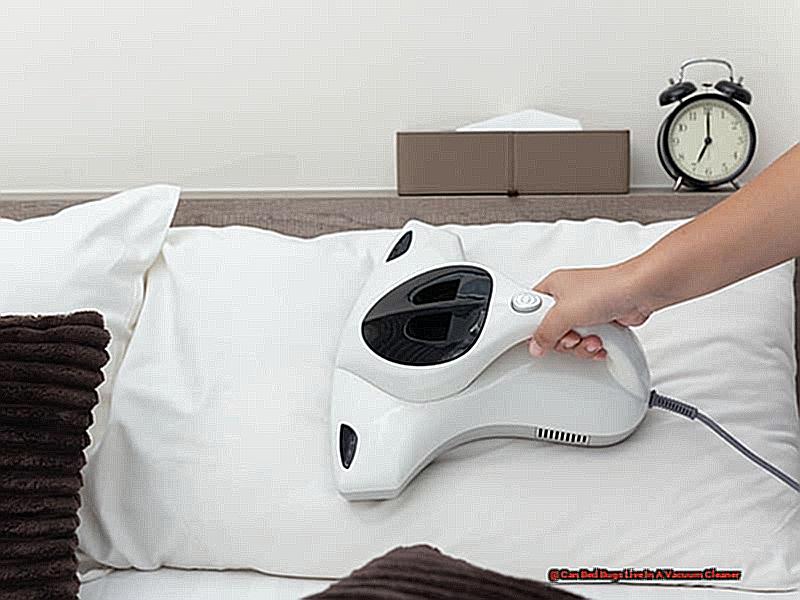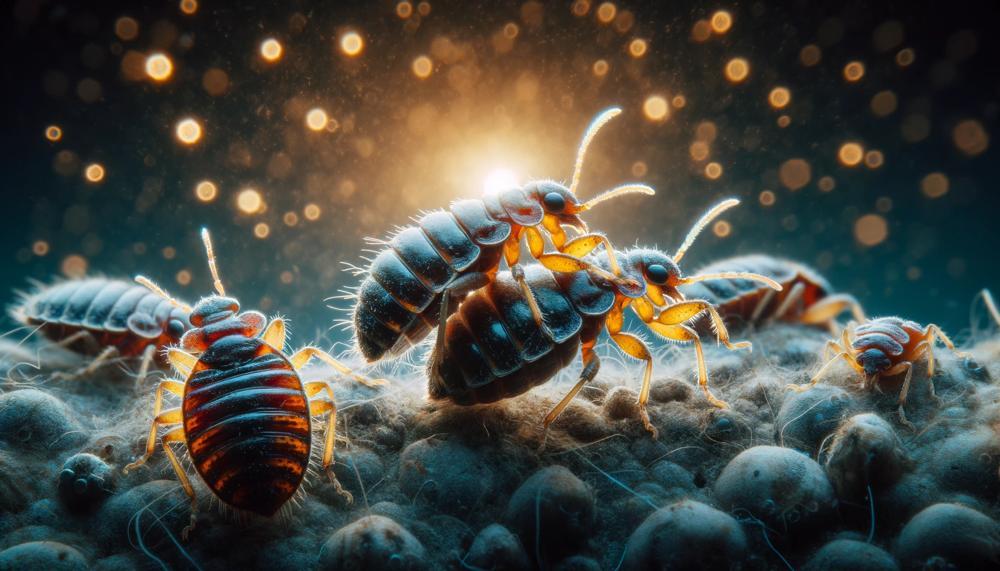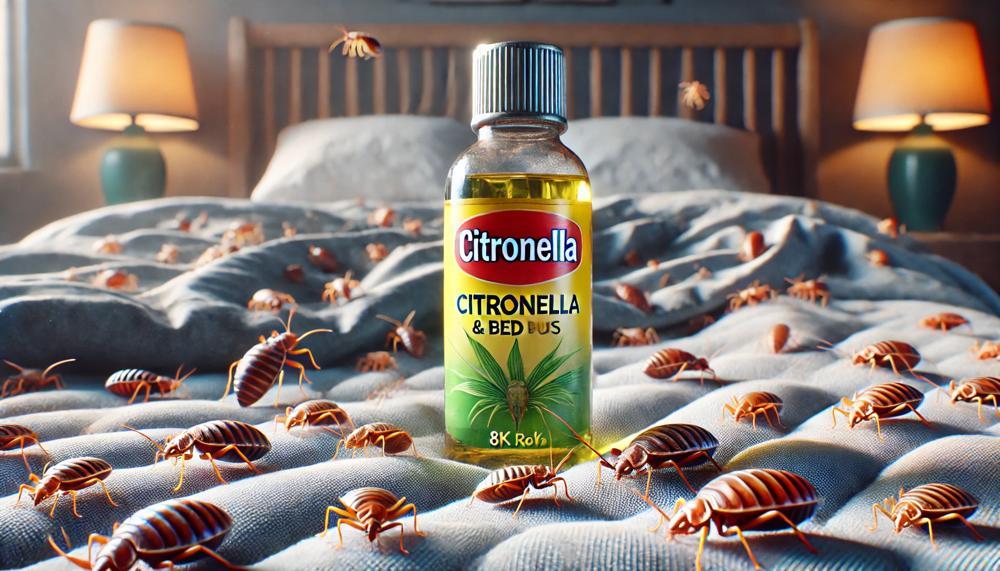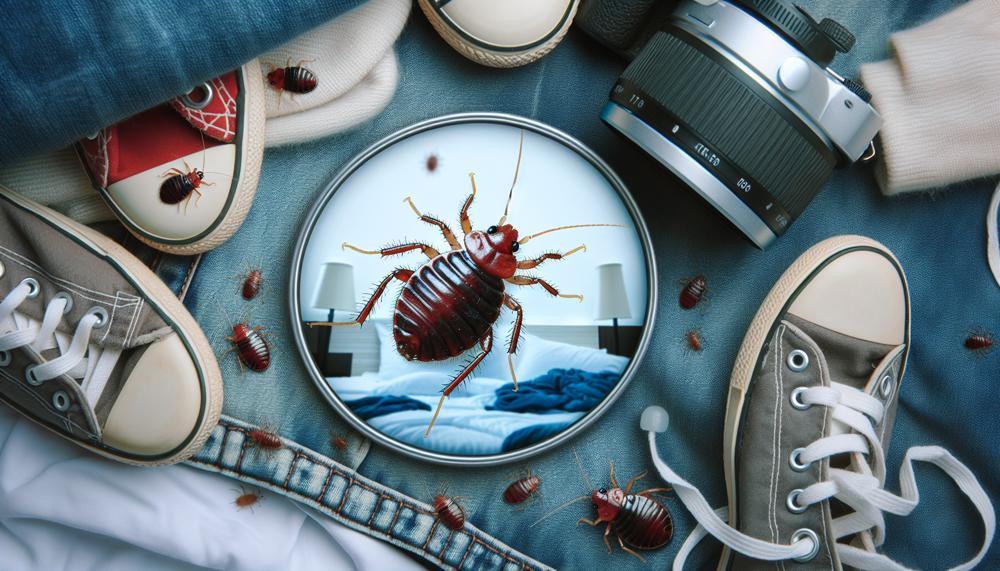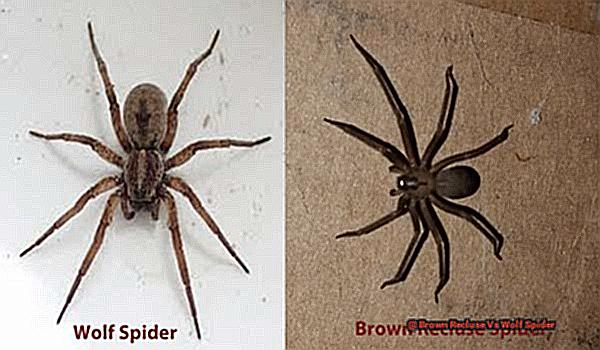Have you ever woken up to find mysterious red bites all over your body?
At first, you may think it’s just a pesky mosquito or spider, but what if these bites keep appearing every morning? The culprit could be bed bugs – tiny insects that feed on human blood and can cause immense discomfort and frustration.
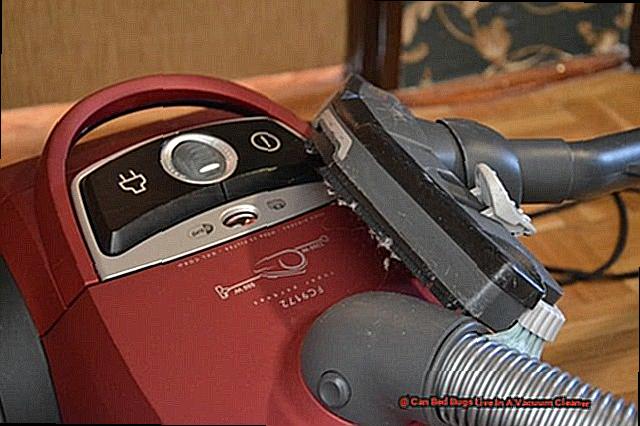
Most of us know that vacuuming is an effective way to get rid of these pests, but recent studies have shown that bed bugs are actually capable of surviving in vacuum cleaners. Yes, you read that right.
We’ll uncover how these sneaky pests manage to survive in vacuums and share tips on how to truly eliminate them from your home.
Table of Contents
- 1 Understanding Bed Bugs and Vacuuming
- 2 The Process of Vacuuming Bed Bugs
- 3 The Effectiveness of Vacuuming Bed Bugs
- 4 The Risks and Challenges in Vacuuming Bed Bugs
- 5 Best Practices for Vacuuming Bed Bugs
- 6 Vacuuming After Bed Bug Treatment
- 7 Vacuuming as Part of an Integrated Pest Control Strategy
- 8 Professional Help and Extermination Methods
- 9 Conclusion
Understanding Bed Bugs and Vacuuming
The concept of “out of sight, out of mind” may apply to many things, but when it comes to bed bugs, this phrase is far from accurate. These minuscule pests can wreak havoc in your home, and ridding your space of them can be a challenging task.
One common method used to eliminate bed bugs and their debris is vacuuming. However, simply vacuuming may not be enough to completely eradicate these persistent insects. In this article, we will explore effective techniques for removing bed bug eggs from clothing.
Handpicking Bed Bug Eggs
While time-consuming, one simple method for removing bed bug eggs from clothing is by carefully handpicking them off. This involves thoroughly inspecting each item of clothing and manually removing any visible eggs using tweezers or your hands. While this approach may work for a small number of eggs, it may not be feasible for larger infestations.
Washing and Drying on High Heat
Bed bugs cannot survive extreme temperatures, making washing and drying clothes on high heat an effective way to eliminate both bugs and their eggs. To ensure effectiveness, it is recommended to wash and dry the clothes multiple times until the adhesive holding the eggs disintegrates. This method is more suitable for smaller infestations.
Scrubbing with a Brush or Washboard
Using a brush or washboard can physically scrub off bed bug eggs from clothing. This method requires more effort and may not be suitable for delicate fabrics.
Vacuuming with a HEPA Filter
An efficient way to remove bed bug debris from clothing is by vacuuming with a HEPA (High-Efficiency Particulate Air) filter. These filters are designed to trap tiny particles, including bed bugs and their eggs. It is crucial to regularly clean the vacuum filters and dispose of the bag or empty the canister immediately after use if it contains live bed bugs.
The Process of Vacuuming Bed Bugs
Do you often awaken with irritating, crimson bites on your skin? Have you noticed small, shadowy spots on your bed or furnishings? These could be indications of a bed bug invasion.
These troublesome critters not only cause frustration but can also lead to significant discomfort and distress. While there are various methods for exterminating bed bugs, vacuuming has proven to be a trustworthy and harmless approach for controlling their population. In this piece, we will delve into the advantages of vacuuming in managing bed bugs and explore effective techniques for optimal results.
Perks of Vacuuming in Controlling Bed Bugs
Vacuuming plays a pivotal role in managing bed bug populations in your home. Here are some key benefits:
Rapidly diminish large clumps of clustered bed bugs
Bed bugs tend to congregate and form clusters in specific areas, making them easier to detect and eliminate. Vacuuming can disrupt these clusters and remove substantial numbers of bed bugs at once.
Physically eradicate isolated bed bugs
Vacuuming is a physical removal technique that can effectively eliminate individual bed bugs hiding in crevices, cracks, and other hard-to-reach spots. This is especially useful in locations where insecticides cannot be used.
Eliminate insecticide-resistant bed bugs
Some bed bugs have developed an immunity to certain types of insecticides. In such cases, vacuuming proves to be a more efficient method of control as it physically removes the insects rather than relying solely on chemical treatments.
Reduce the use of insecticide in heavily infested areas
Insecticides should be used sparingly and with caution, particularly in areas with a high infestation rate. Vacuuming can help minimize the use of insecticide by removing a significant number of bed bugs without relying solely on chemicals.
The Effectiveness of Vacuuming Bed Bugs
The act of vacuuming is a highly efficient technique for eliminating bed bugs and their debris from your dwelling. Nevertheless, when it concerns eradicating bed bug eggs from clothing, solely utilizing a vacuum may not suffice. In this article, we will delve into the most foolproof approaches for eliminating bed bug eggs from clothing, granting you the opportunity to bid farewell to these bothersome pests once and for all.
Handpicking:
One of the simplest ways to remove bed bug eggs from clothing is by handpicking them off. While this method may be time-consuming, it can be effective in small infestations or for individual items of clothing. Utilize a pair of tweezers or gloves to meticulously remove the eggs and dispose of them in a securely sealed bag.
High Heat:
Bed bugs and their eggs cannot withstand high temperatures. Laundering and drying your clothing on high heat for several cycles can assist in breaking down the adhesive that attaches the eggs to the fabric. This method is most effective on items that can tolerate high heat, such as bedding and towels.
Scrubbing:
Scrubbing your clothing with a brush or on a washboard can physically eliminate bed bug eggs from the fabric. This method can be successful, but it requires a significant amount of effort and may not reach all the concealed crevices where eggs may be lurking.
HEPA Rated Vacuum:
Utilizing a vacuum with a HEPA (High-Efficiency Particulate Air) filter can effectively extract bed bug eggs from clothing. The potent suction and filtration system can ensnare even the tiniest eggs, preventing them from migrating to other areas of your abode.
Steam Cleaning:
Steam cleaning is another effective method for removing bed bug eggs from clothing. The elevated temperature of the steam (above 140°F) can eliminate the eggs within minutes, making it a swift and efficient option.
The Risks and Challenges in Vacuuming Bed Bugs
Are you grappling with a bed bug invasion in your abode? If so, you may have stumbled upon the suggestion of utilizing a vacuum cleaner to eradicate these troublesome insects. While this method may seem like a simple and efficient solution, it poses potential risks and challenges that one should be cognizant of.
Proliferation of Bed Bugs
One of the primary hazards of employing a vacuum cleaner for bed bug extermination is the likelihood of spreading the insects. These minuscule creatures can easily latch onto the hose or attachments of the vacuum, allowing them to be transported to other areas of your home. This can result in a larger infestation, making it arduous to eradicate them entirely.
Survival of Bed Bugs
Contrary to popular belief, vacuuming up bed bugs does not always lead to their demise. Some bed bugs may survive inside the vacuum’s bag or filter, enabling them to crawl back out and continue infesting your living space. This can pave the way for a never-ending cycle of infestations if not addressed appropriately.
Inability to Reach All Nooks and Crannies
Bed bugs are notorious for hiding in nooks and crannies, making it challenging for a vacuum cleaner to reach them all. This can result in a partial elimination of bed bugs, leaving behind a population that can rapidly reproduce and cause further infestation.
Proper Disposal of Vacuum Contents
After using a vacuum cleaner to eradicate bed bugs, it is imperative to dispose of the contents correctly. Improper disposal could enable bed bugs to escape and continue infesting your home. It is recommended to double-bag the contents and dispose of them immediately in an outdoor trash bin.
Potential Physical Damage
The potent suction of a vacuum cleaner can cause harm to delicate surfaces such as carpets and upholstery.
Best Practices for Vacuuming Bed Bugs
When it comes to managing bed bug infestations, proper vacuuming practices can be a powerful tool. But how can you ensure that your vacuuming efforts are as effective as possible? In this guide, we’ll discuss some recommended daily practices to help you get the most out of your vacuum and keep those pesky bed bugs at bay.
Vacuum Regularly
Consistency is the key to successful bed bug control. It is crucial to vacuum areas prone to bed bugs on a daily basis to stay ahead of the infestation. This includes rugs, floors, upholstered furniture, bed frames, under beds, and all cracks and crevices around the room. By vacuuming regularly, you can remove any bed bugs or eggs before they have a chance to multiply.
Invest in a High-Quality Vacuum
Investing in a high-quality vacuum with strong suction and a HEPA filter is essential for effective bed bug control. These vacuums are specifically designed to capture smaller particles like bed bugs and their eggs, ensuring that they do not escape back into your home.
Change the Bag After Each Use
To prevent any potential bed bugs from escaping, it is important to change the vacuum bag after each use. This will also help prevent cross-contamination between rooms.
Seal and Dispose of the Bag Immediately
After changing the bag, make sure to seal it tightly in a plastic bag and dispose of it immediately outdoors in a garbage bin. This will ensure that any captured bed bugs or eggs do not find their way back into your home.
Carefully Consider Bagless Vacuums
Although bagless vacuums may seem more convenient, they come with their own set of challenges when dealing with bed bugs. If you choose to use a bagless vacuum, make sure to empty the contents outside into a plastic bag and then dispose of it in an outdoor garbage bin.
Vacuuming After Bed Bug Treatment
Before you kick back and relax, there’s one crucial step you can’t afford to overlook – vacuuming. Vacuuming is an essential part of removing any remaining bed bugs or eggs that may have survived the treatment. But how often should you vacuum after bed bug treatment to effectively eliminate them for good?
The answer may surprise you – daily for the first week. Now, let’s delve into the intricacies of why daily vacuuming is necessary and how to do it effectively.
Why Daily Vacuuming is Imperative
Bed bugs are infamous for their resilience, and even the most thorough treatment may not eradicate all of them. This is where daily vacuuming comes into play – it helps pick up any stragglers that may have survived. Not only that, but bed bugs can lay hundreds of eggs in their lifetime, and regular vacuuming can prevent those eggs from hatching and continuing the infestation.
Moreover, bed bugs are sneaky creatures that love to hide in hard-to-reach places such as seams in mattresses, box springs, and furniture. Daily vacuuming can target these areas and eliminate any bed bugs or eggs that may be lurking.
Effective Vacuuming Techniques
To ensure your vacuuming efforts are fruitful, here are some tips to keep in mind:
- Utilize a high-powered vacuum with a HEPA filter: Bed bugs and their eggs can easily escape a low-powered vacuum, so investing in a high-quality one with a HEPA filter is crucial.
- Pay close attention to known hiding spots: As mentioned earlier, bed bugs have a knack for hiding in seams and crevices. Focus your vacuuming efforts on these areas to ensure no bed bugs or eggs are left behind.
Vacuuming as Part of an Integrated Pest Control Strategy
If you are struggling with a bed bug invasion, you understand the tenacity and frustration these pests can bring. Although vacuuming in isolation may not be enough to eradicate them completely, it is a critical element in an integrated pest control strategy. Here are some recommendations for efficient vacuuming to aid you in your battle against bed bugs.
Select the Appropriate Vacuum
Not all vacuums are created equal, particularly when it comes to eradicating bed bugs. When choosing a vacuum, opt for one with powerful suction and a hose attachment. This will enable you to reach into crevices and tight areas where bed bugs may be lurking. It is also essential to avoid using the brush attachment as it can scatter the bugs and make them harder to capture.
Invest in a Vacuum Specifically Designed for Bed Bug Removal
For severe infestations, it might be worthwhile to invest in a vacuum specially designed for removing bed bugs. These vacuums have unique features such as high heat or UV light that can help kill bed bugs and their eggs as you vacuum. While they may be more costly than a regular vacuum, they can be a valuable tool in your fight against bed bugs.
Target Common Hiding Spots
Bed bugs can hide in various places like beds, furniture, carpets, and baseboards. When vacuuming, pay particular attention to these areas and use the hose attachment to thoroughly clean them. Do not forget to vacuum your mattress and pillows as these locations are prime spots for bed bugs to hide.
Dispose of the Vacuum Bag Properly
After vacuuming, it is crucial to dispose of the bag correctly. Bed bugs can survive being vacuumed up and crawl out if the bag is not sealed tightly. Double bagging the vacuum debris and promptly disposing of it outside can help prevent re-infestation.
Professional Help and Extermination Methods
These minuscule pests can cause immense frustration and discomfort, making it imperative to discover effective methods to eliminate them. A common conundrum that many individuals face is whether these bed bugs can survive in a vacuum cleaner. The answer is affirmative, as they can indeed thrive in your cleaning equipment. Hence, it is crucial to employ professional extermination techniques to eradicate them and prevent their infestation in your vacuum cleaner.
As an expert in the realm of professional help and extermination methods, I possess firsthand experience in dealing with bed bug infestations. In this piece, I will divulge the most efficacious approaches utilized by professionals to eradicate bed bugs and inhibit their existence in your vacuum cleaner.
Heat Treatment:
The most potent method employed by professionals to eliminate bed bugs is heat treatment. This technique involves heating the affected area to a temperature that proves fatal for these pests. Extensive research has revealed that bed bugs cannot survive at temperatures exceeding 122 degrees Fahrenheit, rendering heat treatment an exceedingly efficacious approach. Professionals utilize specialized equipment to heat the infested area, ensuring the termination of all stages of bed bug life, including eggs and adults lurking in nooks and crannies.
Chemical Treatment:
Another method adopted by professionals is chemical treatment. This entails deploying robust pesticides specially designed to target bed bugs. Unlike over-the-counter products, professionals have access to more potent chemicals that prove more effective in exterminating these pests. The chemicals are sprayed directly on the infested areas, instantly killing the bed bugs upon contact. Professionals also utilize pesticides with residual effects, meaning they continue to function for several days after application, guaranteeing the annihilation of all bed bugs.
Integrated Pest Management (IPM):
For severe infestations, professionals employ a combination of heat and chemical treatments known as integrated pest management (IPM).
Conclusion
In conclusion, waking up to unexplained red bites can be a tell-tale sign of a bed bug infestation. While vacuuming may seem like a simple and effective solution, recent studies have revealed that bed bugs are resilient enough to survive in vacuum cleaners. However, this does not mean that vacuuming is completely ineffective in eliminating these pests.
To truly combat a bed bug infestation, it is crucial to understand their behavior and habits. In addition to vacuuming, manually removing eggs, washing and drying on high heat, scrubbing with a brush or washboard, and using a HEPA filter can all contribute to eradicating bed bugs from clothing.
Vacuuming is an essential component of any integrated pest control strategy against bed bugs. However, it is important to use the proper techniques and equipment for maximum effectiveness. Regularly changing the vacuum bag, disposing of it correctly, and targeting common hiding spots are key steps in successful vacuuming.
For severe infestations, seeking professional help may be necessary. Methods such as heat treatment, chemical treatment, or integrated pest management (IPM) are specifically designed to eliminate bed bugs and prevent their return.

